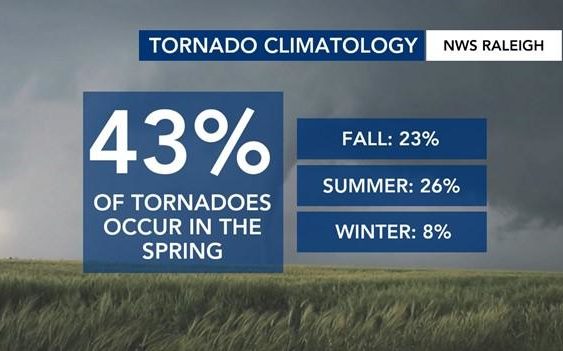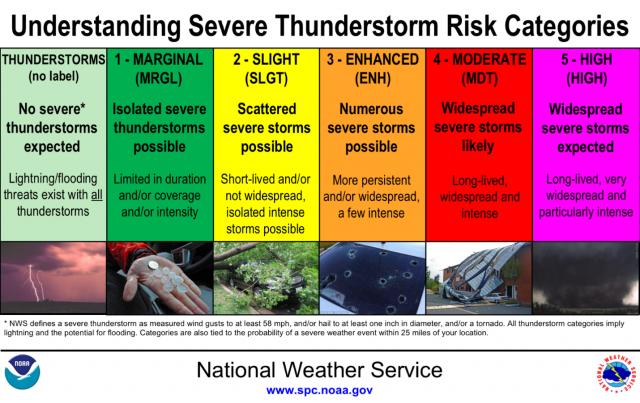- California wildfire burns out of control but firefighters could get a break when winds diminish
- 'Flooding is our number one natural disaster' | Breaking down the voter-approved Harris County Flood Control District tax rate hike
- Powerful Category 3 Hurricane Rafael knocks out power in Cuba as it heads to the island
- NC Forest Service warns of increased wildfire risk in western part of state after Helene
- First responders searched for hours after being told two people were swept away in flash flood
When to worry, when to take cover: Here's what the levels of severe weather threats really mean

On TV and online, our team of meteorologists often reference a threat for severe weather on a scale of 1 through 5 with 1 being the lowest and 5 being the highest. Spring is the top severe weather season in NC, but storms can come at any time, so it is important you understand what these threat categories mean to better assess your risk and prepare ahead of bad weather.
Severe weather is officially defined as a storm that produces one of the following: wind gusts 58+ mph, tornadoes or hail over 1” in diameter. Only these 3 factors are considered when the Storm Prediction Center places a region under a threat level 1-5.
I did some digging through the past 5 years of storm data to see how common it is to be placed under a risk in central NC and how often these risks verify with at least one warning in the same region.
- A level 1 threat is common, with an average of 50 days per year under a level 1 threat. A level 1 risk resulted in at least one severe thunderstorm or tornado warning 44% of the time.
- A level 2 threat is less common, with an average of 17 days per year under a level 2 threat. Level 2 risks resulted in warnings 64% of the time, a much higher correlation.
- A level 3 threat is rare and central NC only sees an average of 4 level 3 risks per year. The correlation with warnings was very high. Warnings were issued 82% of the days central NC was under a level 3 threat.
- Level 4 threats are extremely rare and there have always been warnings issued when central NC was under a level 4 threat. There have only been 3 level 4 risks issued here.
The bottom line is the higher severe weather risk levels result in higher chances that severe thunderstorm warnings or tornado warnings will be issued. Level 3 and 4 threats are not only rare in central NC, but they also verify with warnings more than 80% of the time.
I hope this deeper dive into severe weather levels helps you appropriately gauge your risks during future severe weather events.
